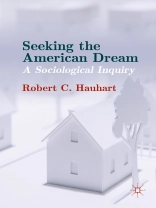Historically, the United States has been viewed by generations of immigrants as the land of opportunity, where through hard work one can prosper and make a better life. The American Dream is perhaps the United States’ most common export. For many Americans, though, questions remain about whether the American Dream can be achieved in the twenty-first century. Americans, faced with global competition and increased social complexity, wonder whether their dwindling natural resources, polarized national and local politics, and often unregulated capitalism can support the American Dream today. This book examines the ideas and experiences that have formed the American Dream, assesses its meaning for Americans, and evaluates its prospects for the future.
Inhoudsopgave
Chapter 1: Antecedents.- Chapter 2: Early Sociological Investigations of the American Dream.- Chapter 3: Sociological Studies of American Life in the 1920’s.- Chapter 4: The American Dream in the Great Depression.- Chapter 5: The American Way of Life in the Post-World War II Era.- Chapter 6: Post-war Affluence Meets the Great Society.- Chapter 7: The American Dream Critically Examined.- Chapter 8: The American Dream in a Diminished Economy.- Chapter 9: Dreams, Class and Opportunity at the Fin de Siecle and Beyond.- Chapter 10: Contemporary 21st Century Assessments of the American Dream.- Chapter 11: Down and Out or On Their Way: Street People, the Homeless, and College Students Envision the American Dream.- Conclusion.
Over de auteur
Robert C. Hauhart is Professor of Society and Social Justice at Saint Martin’s University, Washington, USA. He is the co-author (with Jon E. Grahe) of
Designing and Teaching Undergraduate Capstone Courses (2014) and co-editor (with Jeff Birkenstein) of
American Writers in Exile (2015). He has taught previously at Pacific Lutheran University, USA, the University of New Mexico, USA, and the University of Maine at Machias, USA.












